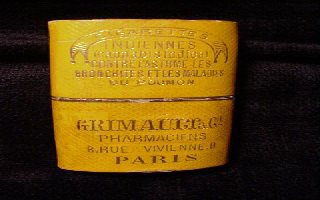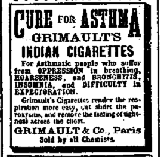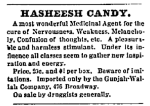ANTIQUE CANNABIS MEDICINES
Chapter 15
Chapter 15

The Dark Side of Antique Cannabis Medicines
There are those who question the inclusion of this chapter; After all why should a pro-Medical Marihuana museum go about bring up negatives. However, I for one feel that the truth (all the truth), must be told. That Cannabis was used by 19th Century charlatans and quacks is a historical fact. One, that if we don't bring it up, someone else will. Besides that, after extensive research, our museum has only been able to document eight (and only eight) accusations of quackery against pre-1937 Cannabis medicines and, as we shall see, many of these were unjustified.
 Grimault |
 Grimault |
 Victors |
 Victors |
 HashishCandy |



















